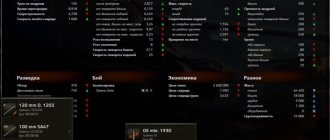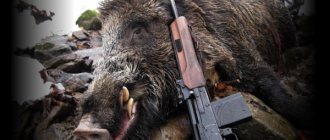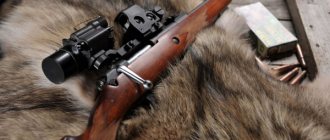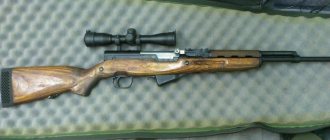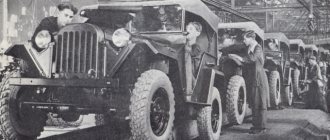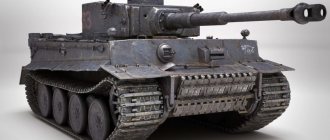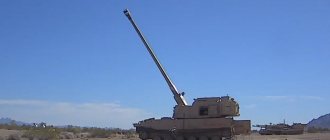If you ask an ignorant person what models of American-made tanks he knows, you will probably hear the answer: M103 and Abrams. The first model was often compared to the Soviet T10 heavy tank. For this reason, M103 was often mentioned in specialized literature. The Abrams, according to experts, is the best American tank. Nevertheless, throughout the history of tank building, American gunsmiths have produced many models of armored vehicles.
The tanks that appeared in the First World War did not leave designers and the US military indifferent. By 1920, the first American tank was ready. Military engineers carried out work in several directions: they designed light, medium-heavy and heavy models of combat armored vehicles. You will find information about the design and technical characteristics of some models of American tanks in the article.
M3 "Stuart"
It is an American light tank created in 1940. It was based on the “cavalry” M1 and the light M2A4. The rear part of the hull became the place for the power compartment, the middle part was for the combat and control compartments, and the bow part was for the transmission and drive wheels. The chassis consists of four small pairs of interlocked road wheels and sprung guide wheels. Rolled sheet armor was used to make the hull and turret. Assembly was carried out by welding using special rivets. The tank was armed with a 37 mm cannon, which was paired with a 7.62 mm machine gun.
In addition, this tank used three 7.62 mm machine guns, the installation location for which was the nose of the armored vehicle. Two machine guns were located near the side compartments, one near the driver. To control fire from the main tank gun and the coaxial M3 Stuart machine gun, they were equipped with a telescopic sight and mechanical devices for aiming the weapon at the target.
This American tank was the base one. Based on it, M3A1 and M3A3 were designed. New modifications had round turrets, but there was no commander's cupola. These tanks had special systems whose task was to stabilize the gun vertically. M3A3 was produced since 1942. Unlike the analogue, the developers decided to remove the three bow machine guns. However, later one was left at the disposal of the tank driver. The assembly of armored vehicles was carried out exclusively by welding. These American tanks of World War II were used by reconnaissance units. In 1943, the M3 was replaced by the M5 tank. The number of American M3 Stuart series tanks produced was 13.5 thousand units.
TTX
- Tank with a combat weight of 12.1 tons.
- Total length – 444.5 cm, width – 246.5 cm, height – 249 cm.
- The crew consisted of 4 people.
- The tank was equipped with 103 shells. and cartridges - 14 thousand pcs.
- The thickness of the armor in the frontal part is 4.3 cm, the turret is 3.8 cm.
- The tank was equipped with a Giberson T1020M diesel engine with a power of 220 horsepower.
- "Stuart" moved at a maximum speed of 57 km/h.
- Power reserve indicator – 110 km.
What conclusions can be drawn?
The safer the tank crew feels, the better they will perform their functional duties. That is why they are always trying to improve frontal armor. Since the Abrams and T-90 were developed during the Cold War, the greatest attention was paid to the frontal part of the combat vehicle, which is important when conducting head-on combat in open areas. But at present there is a high probability of a tank battle in an urban environment. Consequently, it makes no sense to hit frontal armor up to 800 mm thick, since it is much easier to penetrate the side or stern. Usually the armor thickness there is no more than 100 mm.
That is why Russian heavy tanks, like the United States, have weak points. Nevertheless, among the advantages of the T-90 it is worth noting the ability to hit targets with guided missiles at a distance of up to 5 km, good maneuverability, high rate of fire, and reliable armor. As for the Abrams, it is not without its strengths. The Americans value their crew, so they always isolate them from the ammunition storage. In addition, the M1A1 and M1A2 have high power density and good maneuverability, as well as an excellent fire control system. But this is not the end of the comparison between Russian and US tanks. Now we will look at a few more modern machines. These tanks are under development, but it is already known that they will soon be rolled off the assembly line.
"Stuart" M5
According to experts, during the Second World War there was an intensive development of American tanks. In 1943, the M3 was replaced by the M5 Stuart. As in the previous model, the new light American tank was equipped with a 37 mm main gun and a coaxial 7.62 mm machine gun. In the bow, instead of three, they decided to install two machine guns (7.62 mm): one in the frontal part, the second was mounted on the turret. It was used as an anti-aircraft gun.
The new American tank, like its predecessor, had a gun stabilizer. A new power plant was provided for the M5, which was represented by two V-shaped carburetor engines with liquid cooling. Changes also affected the hull design: the frontal plate was tilted at a greater angle, and the thickness of its armor was increased. The stern also had a slightly modified configuration. The new tank had a longer turret. It was equipped not with prismatic ones, as in the M3, but with periscopic observation devices. The United States industry produced a modification of the M5A1, which had special screens protecting the tracks. A radio station was installed in the M5A1 turret. M5 light tanks were produced until 1944. During the year, 6,810 units were produced.
US tanks from World War II
In the summer of 1940, when war broke out in Europe, there were 300 light and 20 medium tanks in the US ranks; there were no heavy ones at all. The command already understood perfectly well that they would not be able to avoid being involved in this meat grinder. Having no developments in new tanks, the troops initially began to be equipped with only light and medium armored vehicles, and some went into production without even passing tests. The infantry breakthrough tank developed before the war, which received the M6 during standardization, became heavy.
Attempts to modernize old models lead nowhere, and a decision is made to create new models. The first tanks had weak armor and weapons; new models are trying to solve these problems primarily. The light M3 Stuart and the medium M3 Grant/Lee appear. But these tanks are also quite mediocre; they cannot compete on equal terms with German vehicles. After the appearance of the medium M4 Sherman, the situation changes somewhat.
The use of Tigers by the Germans forces the United States to produce the heavy M26 Pershing, which ended the M2 series. Simultaneously with the appearance of the M26, light tanks of the first model were replaced by the M24 Cheffi.
Before the end of the war, the Americans designed and produced M22 Locust airborne tanks and amphibious LVTs. Tank destroyers and anti-aircraft self-propelled guns were produced in large quantities. In total, during the war years, US industry produced 103,096 tanks and self-propelled guns.
M22 "Locust"
This American tank was developed in 1944. The base for it was the units and spare parts of the light M3. The M22 has an unchanged layout: the front part of the hull became the location of the control compartment, transmission and drive wheels, the middle part - the fighting compartment, the stern - the power plant. The unit is represented by a 6-cylinder carburetor engine, which has a horizontal arrangement of cylinders. Due to this design feature, the height of the tank hull is significantly reduced. Unlike the M3, the turret in the M22 is smaller. The Locust used a 37mm cannon as its main weapon.
The M22 chassis is represented by four small pairs of interlocked road wheels. A larger diameter was provided for the guide wheels. They were spring-loaded with a shock absorber and were load-bearing. The M22 had a rubber-metal track with a pinion engagement. If necessary, the tank could be transported by air, the turret could be dismantled. It fit into the fuselage of the plane.
During World War II, American M22 tanks were used by airborne units. Namely, a separate airborne battalion and tank companies. For this reason, the M22 Locust was also called the “airborne tank.” The American industry produced a total of 800 units.
Characteristics
- M22 Locust with a combat weight of 7.2 tons.
- Tank length – 394 cm, width – 203 cm, height – 174 cm.
- There are 3 people in the crew.
- Armed with one M6 37 mm cannon and one 7.62 mm machine gun.
- The combat kit includes shells (50 pieces) and cartridges (2,500 pieces).
- The thickness of the frontal armor is 2.54 cm, the turret armor is 3.8 cm.
- The tank is equipped with a Lycoming 435-T engine with a power of 162 hp. With.
- The M22 covered 64 km per hour.
- "Locast" had a power reserve of 215 km.
Compound
- Level 6: Pawlack Tank (USA, TT-6, upgradeable) - a transitional vehicle without unique mechanics.
- Level 7: M-II-Y (USA, TT-7, pumpable, mechanics: “Reserve caterpillar”) - at level 7 this sub-branch gets a new mechanic.
- Level 8: M-III-Y (USA, TT-8, pumpable, mechanics: “Reserve caterpillar”)
- Level 8: M-IV-Y (USA, TT-8, premium, mechanics: “Reserve caterpillar”) - premium of this sub-branch, new mechanics present
- Level 9: M-VI-Y (USA, TT-9, pumpable, mechanics: “Reserve caterpillar”)
- Level 10: MVY (USA, TT-10, pumpable, mechanics: “Reserve caterpillar”) - 60th pumpable TOP in the game (anniversary).
There are 6 new tanks in total: 5 upgradeable and 1 premium vehicle.
M24 "Chaffee"
The production of this model of light tank began in 1944. During World War II, American M24 tanks were used by reconnaissance units, namely infantry and armored divisions, as well as airborne troops. Despite the fact that in the production of this model the designers used separate units from the M3 and M5 (gearbox and fluid coupling), the M24 differs from its predecessors in the power of the gun, the design of the chassis and the shape of the welded turret and hull. The thickness of the armor plates remained the same as in the M5.
However, in Chaffee the sheets are tilted vertically at a large angle. The armor plates in the aft part of the roof are removable, and the upper frontal plate is equipped with a large hatch. The developers provided this design in order to facilitate repairs in the field. The chassis has five road wheels and an individual torsion bar suspension. A 75 mm modified aircraft cannon and a coaxial 7.62 mm machine gun were installed in the turret. The frontal plate of the hull contains a ball support for another 7.62 mm machine gun. The third - anti-aircraft - machine gun of 12.7 mm caliber was installed on the roof of the tank. Accurate firing of the main gun was ensured by a Westinghouse gyroscopic stabilizer. The Chaffee was equipped with two radio stations and a tank intercom.
M3 "Grant"
It is a medium American tank used by emerging armored units and army formations since 1939. The design feature of the M3 is the three-tier arrangement of weapons. The American developers equipped the lower tier with a 75-mm gun, for which a horizontal guidance angle of 32 degrees was provided. On the second tier there was a tower with the ability to perform circular rotation. There was also a 37 mm caliber gun and a coaxial machine gun. The turret (third tier) was equipped with a machine gun, adapted to hit both ground and air targets.
The M3 Grant used mechanical and hydraulic drives. The weapons were aimed in the vertical plane mechanically. The tank was equipped with periscope sights and prismatic observation devices. The turret and body of the armored vehicle were manufactured using casting and welding technologies. In addition, the tank was assembled using special rivets. According to experts, the M3 Grant was not very successful structurally: the armor was not thick enough, the tank itself was too high and had little firepower. Despite the presence of disadvantages, the United States industry produced large series of these tanks.
Production ceased in 1942. The M3 Grant was replaced by the more advanced M4. Based on the M3, 6 modifications were designed. They differed from each other in the brands of power units. Also, for a specific modification, its own technology for manufacturing the hull and turret was provided. In total, from 1939 to 1942, the United States industry produced 6258 M3 Grant units.
About the characteristics of M3
- "Grant" had a combat weight of 27 tons.
- Tank length – 564 cm, width – 272 cm, height – 312.5 cm.
- There are 7 people in the crew.
- The ammunition is represented by 75 mm shells in the amount of 50 units, 179 37 mm shells and cartridges (9200 pcs.).
- The thickness of the frontal and turret armor is 5.7 cm.
- The tank was equipped with a Continental R-975 EC engine with a maximum power of 400 hp. With.
- In an hour, the M3 covered a distance of 39 km.
- "Grant" had a power reserve of 140 km.
M4 Sherman
The production of this model began in 1942. At that time, the M4 was used as the main tank in the United States Army. In 1943, several batches were produced for export to England and the Soviet Union. Unlike the M3, the Sherman's hull had a different configuration. The M4 also featured a new weapon layout. The power train remains the same.
In order to improve the combat qualities of the new tank, American designers created more and more modifications of the M4 from 1942 to 1943. In total, 7 models of armored vehicles were designed based on the Sherman. Of these, only 4 were in US service: in addition to the basic version, the American army used M4A1, M4A3 and M4A4. Each modification used its own technology in the production. The frontal parts in the body, three in number, were cast. Casting was used to make them. Their connection to each other was carried out using bolts or welding technology.
The weapons used were a 105 mm howitzer and two cannons with a caliber of 75 and 76.2 mm. The M4A3E2 used enhanced armor protection (15.2 cm). During the Second World War, over 48 thousand M4 Sherman of various modifications were produced.
Quality at any cost
During the Cold War, the main task of Western armored units was to successfully resist the Soviet tank wave.
This left a certain imprint on their design. We are accustomed to thinking of Western cars as complex and expensive. This is only partly true. If compared with Soviet cheap and practical tanks, then, of course, the price of the Abrams or Leopard will seem excessive, and the content of electronics and smart “tricks” is very impressive. However, this is not the limit of the capabilities of American industry. Both the Abrams and the Leopard are simple and cheap compared to the MVT-70. This tank captured the imagination of any schizomilitarist, but was too expensive even for the United States. What good are great fighting machines if there are too few of them? That’s why the Abrams went into production in 1980...
MVT-70 is a tank that was in many ways ahead of its time and turned out to be too complex and expensive even for the USA
The US tank industry found itself in a similar situation in the 80s. The threat of a new generation of tanks appearing in the hands of the Russians forced the abandonment of many promising works. Uninhabited towers, crews in a capsule - all this is cool, but expensive and difficult. Therefore, the Americans took the path of further modernization of the Abrams. A little more armor, a bigger gun, a better engine. The car became heavier and grew in size, but it could be produced en masse.
Three ways to modernize the US tank fleet. Shallow modernization of the Abrams, deep and the creation of a new combat vehicle on its components
With the end of the Cold War, there was no need for quick solutions. There was no longer a need to produce tanks in large quantities, but the military was not going to give them up either.
The United States had to take on the role of the world's chief policeman, which meant that there were numerous local wars ahead. And if earlier an ordinary dictator could only count on supplies of not the most modern equipment, now the world has changed. With the collapse of the Union, its numerous military enterprises entered the world arms market. For little money, anyone could buy the most advanced weapons from the countries of the former USSR. Where previously, at best, export T-72s could have been found, now the best T-80U or even the semi-mythical T-95 could well appear.
This is how the promising Russian T-95 tank was presented in the West
The approach to war has also changed in the United States itself. Losses in a major conflict with the USSR, no matter how hard you try, were inevitable, even if you were lucky and things wouldn’t have come to an exchange of nuclear strikes. But the losses in the wars with the “Papuans” were completely unacceptable to the public.
It turned out that the US Army needed a tank that was head and shoulders above even the most advanced opponents. At the same time, it was no longer necessary to rivet it in large quantities. For local conflicts, several hundred machines are quite enough. The most interesting thing remained - to determine the requirements for this tank.
M6
This model of a heavy tank was produced in small series from 1941 to 1942. The armored vehicles were armed with two twin cannons of 76.2 and 37 mm calibers, two twin large-caliber guns and one anti-aircraft machine gun. The chassis with 8 small pairs of interlocked road wheels and the suspension contained vertically located buffer springs. The basic model M6 had a cast body, modifications (M6A1 and M6A2) had a welded body. M6 and M6A1 were equipped with a hydromechanical power transmission, M6A2 - electrical. Turrets made by casting were intended for tanks.
In an effort to balance the twin gun system, the designers lengthened the rear part of the turret. There was also space allocated for viewing devices, a bracket for anti-aircraft weapons and a commander's cupola. External communication was maintained using an installed radio station. According to experts, the M6 turned out to be structurally unsuccessful: due to its high altitude, it had limited mobility. In addition, the weapons left much to be desired. For this reason, only 40 units of the M6 were assembled.
The tank had the following tactical and technical characteristics:
- Combat weight - 56 tons.
- Length – 142 cm, width – 306 cm, height – 295 cm.
- The crew of one M6 consisted of 6 people.
- The ammunition included 7.62 mm shells in the amount of 75 pieces, 37 mm shells - 202 pieces and cartridges - 5700 pieces.
- The thickness of the hull armor was 10 cm, the turret armor was 8.1 cm.
- The M6 is equipped with a carburetor engine with a maximum power of 800 horsepower.
- The M6 reached a maximum speed of 35 km/h.
- The power reserve indicator was 160 km.
These tanks never had the chance to take part in battles. M6 were used as training ones.
M26 Pershing
This model of the class of heavy tanks has been in service with the United States since 1944. Despite its impressive weight (41.5 tons), due to its insignificant combat characteristics, the M26 was soon reclassified as a medium tank. Armored vehicles with a welded body contained rolled sheets and shaped castings. The bottom of the tank was trough-shaped. The armor surfaces in the bow are inclined. The cast turret, on which the commander's cupola, observation devices and a bracket for an anti-aircraft gun were installed, is characterized by an elongated shape. The chassis with individual torsion bar suspension has support rollers (6 pcs.).
The power system is represented by an 8-cylinder liquid-cooled Ford GAF-V petrol engine. A smooth start of armored vehicles was made possible thanks to the presence of a hydromechanical transmission. According to experts, the M26 had improved cross-country ability and easily traversed rough terrain. The main armament of this heavy tank was the 90mm M3 cannon. The projectile fired from it had an initial speed of 810 m/s. Additional weapons included two 7.62 mm and one 12.7 mm anti-aircraft machine guns. Periscope sights were responsible for direct aiming of guns at the target. Shooting from a closed position was possible thanks to the quadrant protractor. The number of M26s produced was 1,436 units. Persing has the following indicators:
- Tank with a combat weight of 41.5 tons.
- Length M26 – 640 cm, width – 350 cm, height – 280 cm.
- The tank was designed for a crew of five people.
- The ammunition included shells (70 pieces) and cartridges (5500 pieces).
- The carburetor-type power unit had a maximum power of 500 hp. With.
- The M26, with a power reserve of 180 km per hour, covered distances of up to 48 km.
American tank T 29
It is an experimental heavy tank of the United States used in World War II. The design of this model began in March 1944. The task of this American tank (photos of armored vehicles are presented in the article) is to resist Nazi armored formations. After the fighting in Normandy, it became obvious that the United States did not have tanks capable of resisting the German Tigers and Panthers. The first decision made by the United States military command was to reclassify the Parshing as heavy. At the same time, the T28, T29 and T30 line was created.
It was planned to produce two American tanks each - T29 and T30. The main armament for the first model was a 105 mm T5E2 cannon, and for the second - a 155 mm T7 cannon. American designers planned to begin serial production of the T29 in 1944. However, development was delayed, and the appearance of the first prototype of an American heavy tank took place two years after the end of the war. By that time, there was no longer a need for such armored vehicles. For this reason, there was never an order for the production of T29.
In 1947, American designers assembled 8 prototypes based on the T29. The T29E1 and E2 are characterized by a modified transmission and the presence of more powerful engines. The T29E3 uses a modified turret and a new gun control system. Soon, an experimental 120-mm T53 gun was installed on the T30. The new model in the technical documentation was already listed as the American T 34 tank. A special letter designation is provided for the armored vehicles. The letter "T" indicates that the tank is a prototype. If the combat unit is mass-produced, then the letter “M” is used. According to experts, there is no data on the adoption and mass production of the 29th model of American tanks.
History of American tank building. Part 1
Since the end of the 19th century, the United States of America has entered a phase of rapid development in all areas: industry, science, education, culture. The army and navy provided guaranteed protection from any enemy in the New World, and the oceans that washed the shores of North America served as the most reliable barrier to potential overseas aggressors.
In its foreign policy, the United States has long followed the principle of isolationism and stayed away from the wars breaking out in Europe. However, when the First World War began, the situation changed somewhat. After incidents that resulted in the sinking of several American-flagged merchant ships, Wilson asked Congress for authorization for the country to enter the war. On April 4, 1917, the Senate, and on April 6, the US House of Representatives adopted a resolution on the entry of the United States into the First World War.
On June 13, 1917, General John Joseph Pershing arrived in Europe with the first units of the American Expeditionary Forces. Previously, this military leader had the opportunity to take part in conflicts with the Sioux and Apaches, the Spanish-American War of 1898 and the fight against the rebels of Pancho Villa. Trench warfare in Europe was somewhat different from how the American military imagined it, and Pershing was well aware of how important it was for the army to combine striking power with mobility. It is not surprising that it was he who initiated the creation of US armored forces.
On January 26, 1918, the formation of the American Tank Corps began, organizationally consisting of two parts: the tank corps as part of the American Expeditionary Forces in Europe and the National Army Tank Service, later renamed the National Army Tank Corps.
Proposals to organize the production of armored combat vehicles have been received by the American military before. Back in 1915, a certain businessman Lowe presented a project for a 30-ton tank based on the Willock tractor. Then, in 1917, another tractor company introduced a machine very reminiscent of the British tank - “Little Willie” by designer William Tritton.
Another interesting project was proposed by a tractor company from Minnesota. This car was nicknamed the “skeleton” due to the design of the chassis. The tracks of the “skeleton” were stretched not onto the body, but onto metal frames with tubular jumpers. A small rectangular tank body, designed for two crew members, was attached between these frames.
The lack of enthusiasm on the part of the military towards American tank projects was the reason that, when General Pershing proved the need to create tank units in the US Army, it was necessary to purchase foreign-made vehicles. On September 12, 1918, American tankers made their combat debut at Saint-Michel, a town south of Verdun. In this battle, the 344th and 345th tank battalions, equipped with Renault FT-17s, were commanded by Lieutenant Colonel J. Patton.
The concept of US armored forces implied the use of small, light, medium and heavy tanks. It was decided to form a fleet of light tanks from the well-proven French Renault FT-17. In terms of its design, this six-ton machine was one of the most advanced in the world. It was in the Renault FT-17 that they first used a layout that later became classic: the main armament was located in a rotating turret, the engine compartment in the stern, and the control compartment in the bow. The Americans planned to put about three and a half thousand vehicles of this type into service. Some of them were to be built by the French, and some were going to be released by the Americans directly to the USA. Acquired a production license.
American designers have made some changes to the design of the Renault FT-17. The visibility for the driver was improved, the armor protection was strengthened, the Renault engine was replaced with a Buda engine made in the USA. The American version of the FT-17 was produced under the designation M1917. The weapons used were a 37 mm cannon or a machine gun.
It was planned to equip heavy tank units with a vehicle jointly developed by the Anglo-American Mark VIII Liberty. This tank was a typical "diamond" design with fairly wide tracks covering the hull. The vehicle weighed 39 tons and was armed with two 57-mm Hotchkiss cannons. The role of auxiliary weapons was performed by 5 or 7 rifle-caliber machine guns. The crew of a ten-meter tank included from 8 to 11 people.
The Liberty was a kind of logical conclusion to the British concept of diamond-shaped tanks. Probably, it would be possible to work further in this direction, however, after the layout of the Renault FT-17 was recognized as classic, the time of the “diamond” began to come to an end.
The Mark VIII did not see action in World War I. But from 1919 to 1920, the Americans built about 100 vehicles of this type, and until 1930, the Liberty remained the only heavy tank of the US Army.
After the end of the First World War, large formations of such an expensive type of troops as tanks were beyond the means of the United States, and in 1920 the American tank corps were disbanded. Subsequently, for 20 years, there were no large tank formations in the US Army, but funds were allocated from time to time to improve equipment.
For example, in the second half of the 1920s, the American command considered the M1917 obsolete and initiated the creation of a light tank of a more advanced design. Specialists from the Rock Island Arsenal, in collaboration with designers from the Cunningham tractor manufacturing company, presented the T1 machine project to the customer in 1924. This small seven-ton tank had a non-standard layout with a turret in the rear and an engine in the front of the vehicle. Various 37 mm cannons and 7.62 mm machine guns were offered as weapons. During the existence of the T1 Cunningham project, about five different modifications were produced, but all of them had various design flaws and were rejected by the military customer.
Modifications T1E4 and T1E6, the last of the Cunninghams, were created to eliminate the shortcomings of their predecessors. Structural elements of the British Vickers six-ton tank were used in the work on them. The designers managed to achieve greater mobility with the same armament, but due to serious problems with the gearbox, both modifications, like the previous ones, were not put into mass production.
For another seven years after the closure of the Cunningham light tank program, the Americans were designing more and more new vehicles in the “light” weight category. Among other things, the T2 LT tank, built on the suspension, was tested. It was supposed to be armed with machine guns or small-caliber automatic cannons. The T2 did not go into mass production, but using the experience gained during its development, the M2 LT light machine gun tank with a new chassis was produced in a small series. On December 29, 1938, the Americans adopted and put into mass production a new light tank, the M2A4. This modification no longer received machine guns, but cannon weapons. The new vehicle was mobile, maneuverable, and in armor protection comparable to medium American tanks of that time. Serial production of the M2A4, during which the Americans, like the French, conducted a series of experiments on creating cast hulls and turrets, did not achieve success and returned to using riveting and welding armor plates, continued until the spring of 1941.
In parallel with the creation of the T1 light tanks, the Americans were developing a medium tank that was superior to light tanks in protection and superior to Liberty in mobility. This medium tank was supposed to carry the designation M1921, weighed 23 tons and was armed with a 75 mm howitzer in a rotating turret. This gun allowed a direct hit from a high-explosive shell to not only knock out, but completely destroy a light tank. During testing, such a sad fate befell the M1917, which was used as a target.
After seven years of development, the machine never went into mass production due to its high cost.
In parallel with the T1 Medium, a smaller medium tank, the 15-ton T2 Medium, was developed and tested. It was also built by Cunningham according to a design similar to that of the light T1. The tank could reach speeds of up to 25 miles per hour on the highway, and was equipped with 37- or 47-mm cannons and machine guns. In fact, at that time the T2 Medium was the best tank developed by the Armaments Department. At the same time, its cost was too high for America during the Great Depression.
The Great Depression led to a radical revision of the armored concept of the United States. Now it was planned to arm the mechanized units with light, mobile and cheaper equipment. Several projects were proposed by engineer J. W. Christie, but the military was rather indifferent to his wheeled-tracked tanks.
By 1934, Christie was so tired of the military that they were ready to adopt anything just to refuse the annoying and harsh engineer. In April 1934, Captain Rarey proposed a tank design using a Christie chassis and hull with four machine gun sponsons and a new 37 mm gun in a rotating turret. The department was delighted with the opportunity, abandoned the Christie chassis and proposed using a newly developed chassis in the design, unified with the T2 light tank and cheaper to produce, after which the vehicle was assigned the T5 index.
After much refinement of the project, the first prototype with a wooden tower was released in December 1937. About a year later, a real steel turret was installed on the tank and it was sent for testing to Aberdeen.
The T5 was protected by approximately 25 mm of armor, powered by an air-cooled Continental engine, and could reach speeds of up to 31 mph on the highway. Armament included a 37 mm cannon and several machine guns. Holes for firing personal weapons were provided in the tank's turret and side doors.
In the summer of 1939, the tank was finally put into service under the designation M2. The car was produced by the Arsenal in Rock Island.
The Second World War, which broke out in Europe, forced the US government to seriously reconsider its views on armored forces. No longer counting on sitting overseas, the Americans began work on more advanced machines. The result was the appearance in the summer of 1940 of the M3 medium tank. But this is a completely different story.
To be continued.
You can discuss the material here.
You can also watch the historical video “Uncle Sam’s Tanks” in the “Media” section.
Tank 34T
This model is a modernized T30. Developed in 1945. In April, at the direction of the American military, designers equipped one T28 prototype with a 120 mm T50 cannon. The model was listed for some time as tank 34. American tanks, namely the T30, were equipped with T53 guns in 1945. This instruction was issued by the United States Ordnance Department. The basis for this decision was that when fired from such a weapon, an armor-piercing projectile had an initial speed of 1100 m/s, and a sub-caliber projectile had an initial speed of 1300 m/s. Within one minute, the American T34 tank could fire 4 shots.
According to experts, the new equipment had good armor penetration. Using an armor-piercing projectile, American tankers from a distance of 900 m could destroy a target dressed in homogeneous armor 19.8 cm thick. The 38.1 cm homogeneous armor did not protect against a sub-caliber projectile fired from the T34. At that time, this, according to experts, was a very good indicator. The turret in T34 had similar armor as in T29 and T30.
Due to the fact that the weight of weapons in the T-34 has increased significantly (2700 kg), American developers installed a special counterweight at the rear of the turret. Initially they planned to equip the tank with a Ford GAC engine. However, during the design, a new engine model appeared - AV-1790 Continental with a power of 810 hp. With. The T34 was equipped with this power unit.
Looking for a concept
The military studied the RAND project. But the search for the ideal concept continued. The main problem was combining a high level of protection and acceptable weight.
A tank weighing 55-60 tons would face serious problems even in Europe. Not every bridge will hold up, and combat vehicles will have to be delivered mainly only by sea. And what will happen when such a colossus ends up somewhere in Africa or North Korea. The car had to lose weight to at least 50 tons. Over the next two years, this issue was raised both in behind-the-scenes meetings and at conferences. And Armor magazine even organized a competition in 1993 for the best MBT project from readers.
The project of a promising main battle tank, which took first place in the Armor magazine competition
The winning project coincided quite well with the wishes of the military. 50 tons of mass and an uninhabited tower. The front-engine layout and placement of tankers in the capsule ensured excellent survivability of the crew. Of course, the level of armor did not reach the RAND monsters, but the author decided not to reject dynamic protection and used it to enhance the protection of the sides.
Internal structure of the winning project
The option of using KAZ (active protection complex) was also considered. The refusal to use guns of the new caliber was interesting. The tank received a 120-mm elongated smoothbore gun, because, according to the author, its power was more than enough to defeat any opponents - both current and future. The crew of the car consisted of three people sitting shoulder to shoulder.
Abrams
Design work on the creation of the American Abrams tank began in 1971. In order to minimize technological risk, the developers decided to use the classic design during the design process. Employees took over production. In 1981, the first experimental model was ready, which was listed as M1. After successful testing, it entered service with the United States. The M1 is also used by the Egyptian and Australian Marines. The American Abrams tank is named after Army General Creighton Abrams. The M1 served as the basis for creating a line of modifications with different combat weights and other tactical and technical characteristics.
The M1 weighs 55 tons. The combat weight of the M1A1 is 57.15 tons, and the M1A1 is 62.5 tons. In the basic Abrams, the thickness of the hull armor is 55 cm, in modifications it is increased to 65 cm. In the production of heavy tanks of this series, developers use anti-ballistic, rolled combined and steel armor. For single specimens of M1A1, active protection AN/VLQ-6 MCD was used for experimental purposes. The M1 is fired from a rifled 105-mm M68A1 cannon. The crews of the modified Abrams hit targets with M256 smoothbore 120 mm cannons. The tanks are equipped with additional weapons - one 12.7 mm M2 NV machine gun and two M240 anti-aircraft 7.62 mm caliber.
The power unit function is performed by an Avco Lycoming AGT engine. The engine has a power of 1500 horsepower. Chassis with individual torsion bar suspension. The power reserve in the base model and M1A1 is 440 km. In the M1A2 this parameter is increased to 465. According to experts, today the Abrams is the best heavy tank. With a reliable and powerful engine, the M1 is very mobile and can give light tanks a run for their money. The M829A3 shells used have the highest armor penetration.
Despite its advantages, the M1 also has disadvantages. The downside of the Abrams is that it is only reinforced with a bulwark, which is made from mild steel and filler. Due to this fact, the American M1 becomes easily vulnerable to the enemy. In addition, the Abrams are not characterized by the presence of guided weapons. US weapons designers carefully study the shortcomings of the M1, taking into account existing combat experience.
Abrams fire control system
The newest US tank M1A1 has one significant drawback, which is the commander’s limited ability to find a target. This is especially noticeable while the car is moving. But the flaw was discovered and eliminated in the subsequent modification of the M1A2. A panoramic thermal imaging sight is already installed there. In this case, the commander can more effectively track and identify moving targets.
The control system on the Abrams tank is more modern than on the T-90. The gunner works with the main sight, which has a thermal imager and a rangefinder. Daily channel multiplicity x3 and x10, with vertical stabilization. There is also an auxiliary eight-fold sight without stabilization. In general, the fire control system on the M1A2 modification is more modern. It provides for the presence of thermal imaging cameras for the commander and gunner. The crew is completely dependent on the automatic fire control system. The electronic control unit (ECU) allows you to stabilize the independent sight and gun drive. In general, we can say that if we compare Russian and NATO tanks, the latter have succeeded in terms of fire control systems. But the T-90 significantly wins at long distances.

